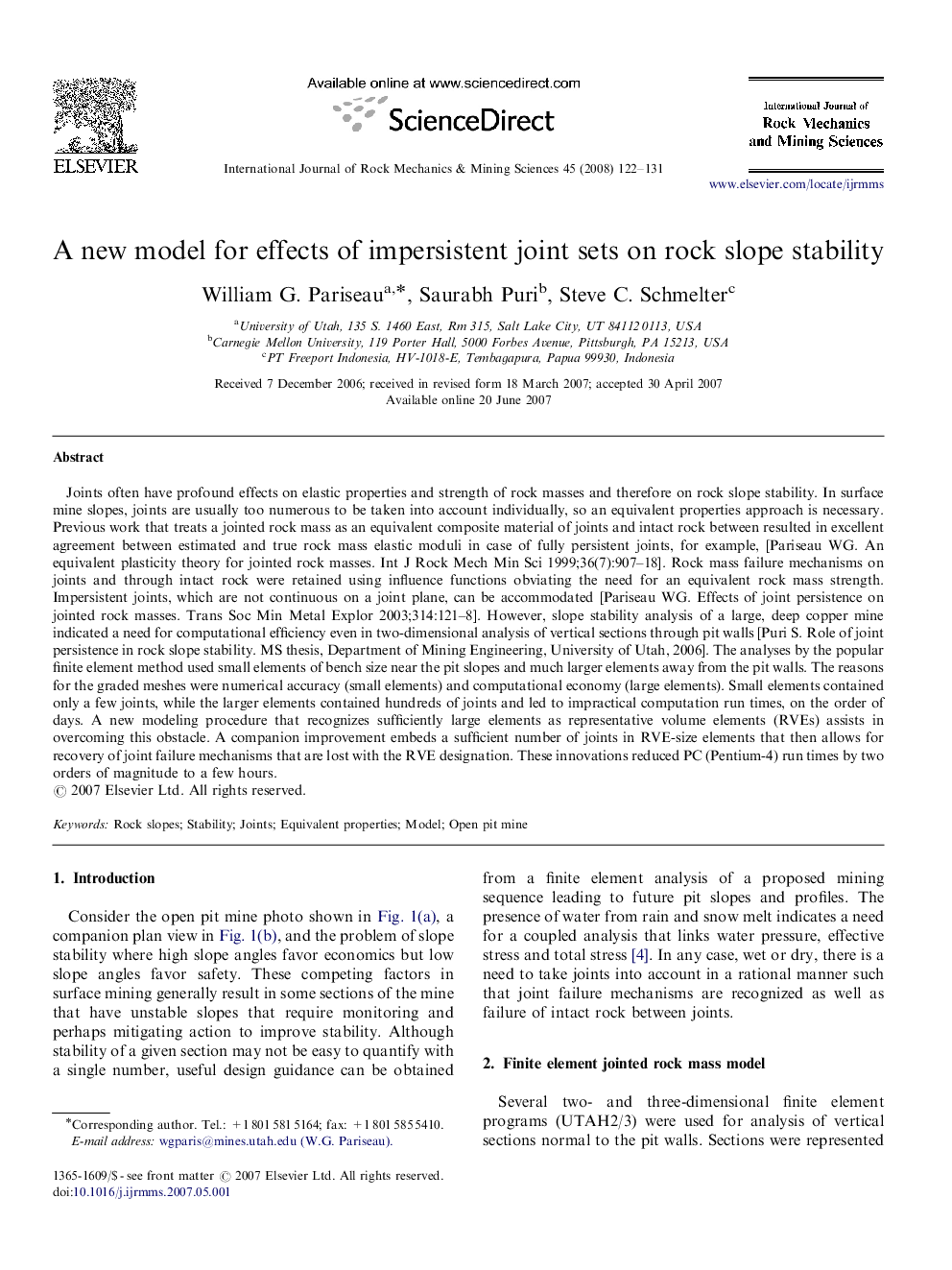| کد مقاله | کد نشریه | سال انتشار | مقاله انگلیسی | نسخه تمام متن |
|---|---|---|---|---|
| 810205 | 1468751 | 2008 | 10 صفحه PDF | دانلود رایگان |

Joints often have profound effects on elastic properties and strength of rock masses and therefore on rock slope stability. In surface mine slopes, joints are usually too numerous to be taken into account individually, so an equivalent properties approach is necessary. Previous work that treats a jointed rock mass as an equivalent composite material of joints and intact rock between resulted in excellent agreement between estimated and true rock mass elastic moduli in case of fully persistent joints, for example, [Pariseau WG. An equivalent plasticity theory for jointed rock masses. Int J Rock Mech Min Sci 1999;36(7):907–18]. Rock mass failure mechanisms on joints and through intact rock were retained using influence functions obviating the need for an equivalent rock mass strength. Impersistent joints, which are not continuous on a joint plane, can be accommodated [Pariseau WG. Effects of joint persistence on jointed rock masses. Trans Soc Min Metal Explor 2003;314:121–8]. However, slope stability analysis of a large, deep copper mine indicated a need for computational efficiency even in two-dimensional analysis of vertical sections through pit walls [Puri S. Role of joint persistence in rock slope stability. MS thesis, Department of Mining Engineering, University of Utah, 2006]. The analyses by the popular finite element method used small elements of bench size near the pit slopes and much larger elements away from the pit walls. The reasons for the graded meshes were numerical accuracy (small elements) and computational economy (large elements). Small elements contained only a few joints, while the larger elements contained hundreds of joints and led to impractical computation run times, on the order of days. A new modeling procedure that recognizes sufficiently large elements as representative volume elements (RVEs) assists in overcoming this obstacle. A companion improvement embeds a sufficient number of joints in RVE-size elements that then allows for recovery of joint failure mechanisms that are lost with the RVE designation. These innovations reduced PC (Pentium-4) run times by two orders of magnitude to a few hours.
Journal: International Journal of Rock Mechanics and Mining Sciences - Volume 45, Issue 2, February 2008, Pages 122–131